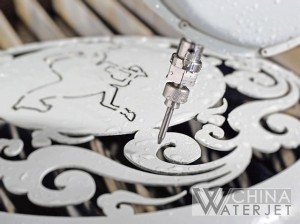Five-axis waterjet cutting technology is a gateway to new fabricating opportunities.
While five-axis operations such as bevel cutting and other weld prep operations have been possible on abrasive waterjet machines for some time, the capability to process 3-D parts such as tubes and pipes on the same waterjet is relatively new. This is opening up new possibilities for metal fabricators.
Huge Opportunities in Water Jet Machining Microsize Parts

Waterjet nozzle technology has advanced to the point where the cutting of parts and part features smaller than 0.012 in. is now possible.
Metal fabricators, like all manufacturers, are seeing growing demand for smaller parts and assemblies required for compact, lighter, energy-efficient products. Abrasive water jet machining is evolving to assist in producing these types of microsize parts.
VICHOR announced “BEST WATERJET PROMO EVER”!
Today VICHOR Waterjet, top one in China waterjet cutting market., announced “BEST WATERJET PROMO EVER“!
Once you have ordered any VICHOR Water jet products, you can get…
Experimental Investigation On Abrasive Water Jet Cutting Using Taguchi Techniques To Optimize Process Parameter Of Various Materials – A Review
Abrasive Water jet (AWJ) Machining is a recent non-traditional machining process. Major part of this technology is a very high-pressure beam of water and abrasives, which is used for machining. Abrasive water jet cutting of material involves the effect of a high pressure velocity jet of water with entrained abrasive particles on to material to be cut. This technology is widely used in industry for cutting difficult-to-machine materials, milling slots, polishing hard materials, cleaning contaminated surfaces, etc. In the present study commercially three different materials AL-6351, Fiber Reinforced Plastic and SS-316 is machined with the abrasive water jet machine. Experimental investigations should conduct to assess the influences of Abrasive water jet machining (AWJM) process parameter on surface roughness and MRR. The approach is based on Taguchi’s method to optimize the AWJM process parameter for effective machining. It was found the process parameters are stand-off-distance from the work surface; work feed rate and jet pressure. The Evaluate criteria of the work surface roughness, MRR.

